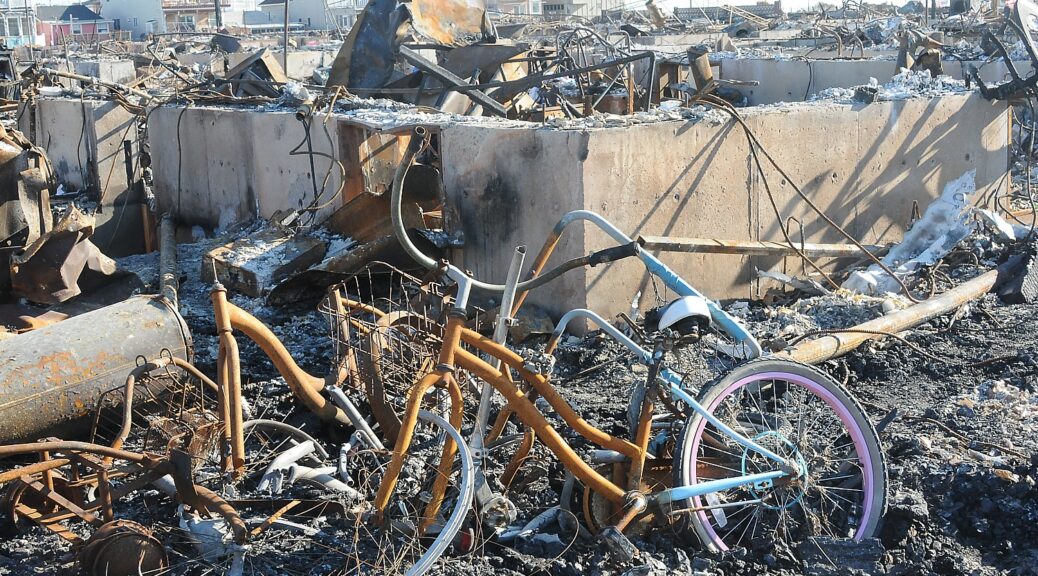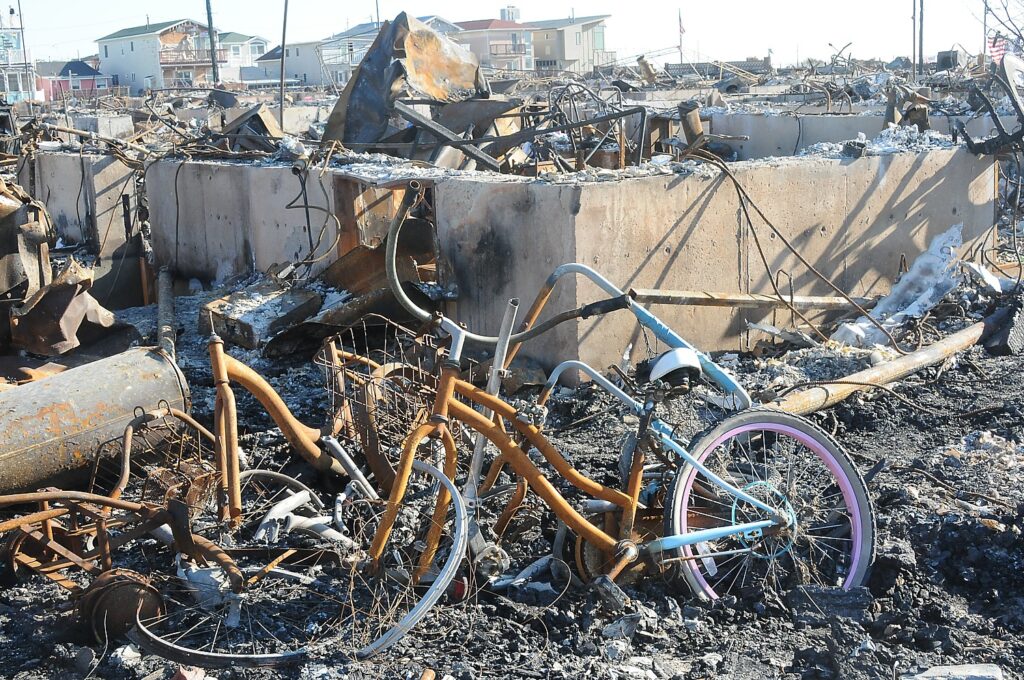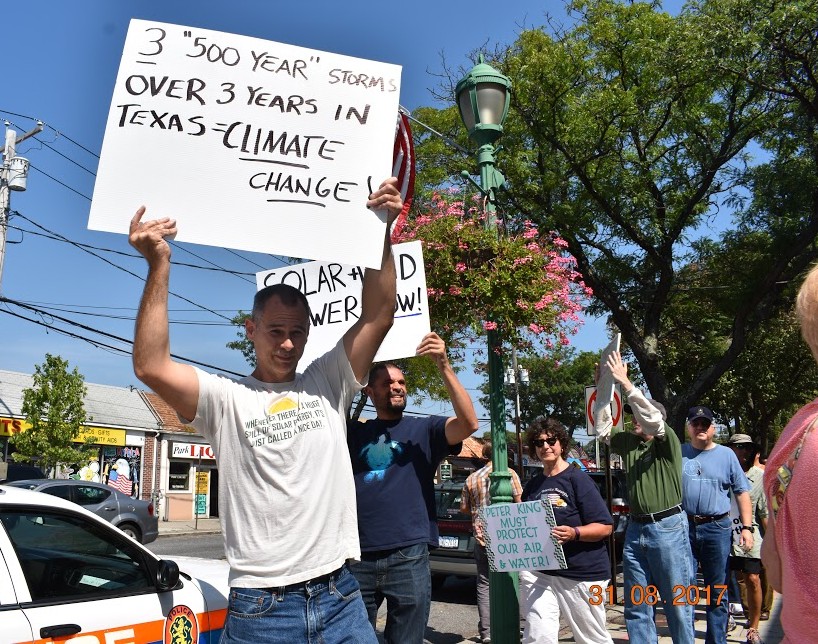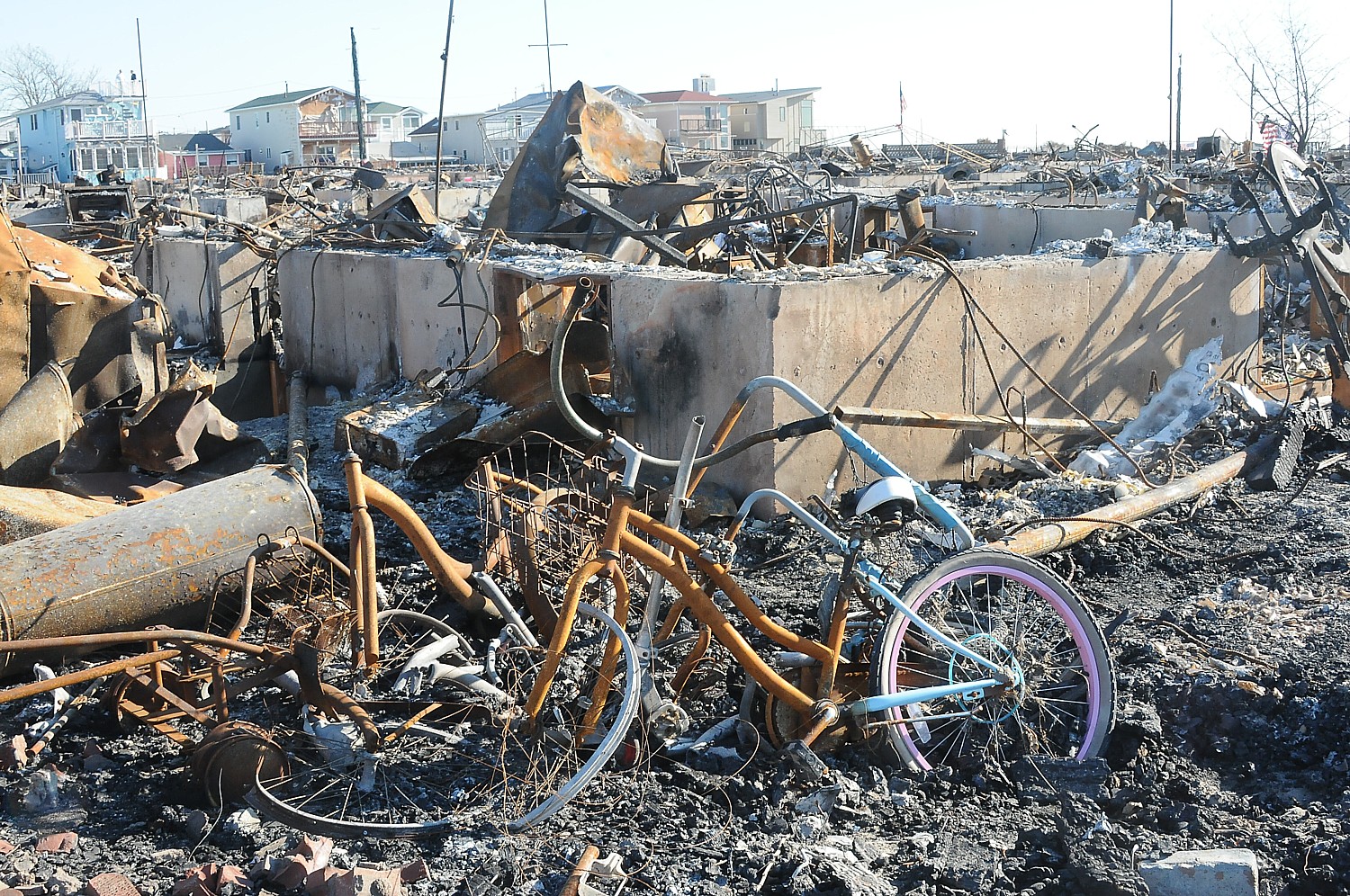
This update Biden-Harris Administration’s continued response efforts after the havoc wreaked by Hurricane Helene across multiple states for days, one of the deadliest storms ever to hit is provided by an administration official.
The National Weather Service reported Helene made landfall in the Big Bend area of the Florida Gulf Coast as a Category 4 storm late in the evening of September 26, 2024. Although slowly weakening as it moved north across the Deep South and then northwestward across the southern Appalachians, Helene caused significant impacts across a large portion of the Southeast U.S., especially around the southern Appalachians. It brought record wind and rain, lines of tornadoes.
While FEMA has attributed Helene’s severity to the ongoing climate crisis, Donald Trump dismisses climate change as a “scam” and didn’t mind disrupting rescue and recovery efforts underway in order to showboat a photo opp in a devastated Georgia community, actually lying about the Biden-Harris administration’s response and outreach to Georgia Governor Brian Kemp and others and charging that the Biden administration discriminates against sending disaster aid to red states (which is what Trump did throughout his presidency. And be reminded that Trump pressured Speaker Johnson to shutdown government unless he got a law requiring voters to prove their citizenship attached to the budget authorization, which would have left these communities without any assistance whatsoever. Trump is the last one to criticize federal response when his “help” to Puerto Rico after devastating Hurricane Maria was to toss paper towels and give the contract to rebuilt the power infrastructure to a Montana crony.
Trump advocates shutting down NOAA, the Weather Service and Hurricane Preparedness (because they provide evidence of human-caused climate change). Trump, who pulled the US out of the Paris Climate Accord in his first term and reversed Obama’s climate initiatives) also promised Big Oil donors that if they ponied up $1 billion, he would reverse Biden’s historic climate actions, and his answer to everything from inflation to housing affordability is “drill baby, drill.”
In contrast, “Vice President Kamala Harris canceled her West Coast campaigning and headed straight to FEMA headquarters in DC to do what she’s always done — confront the existential threat of climate change head-on. Through her unwavering support for the 2022 Inflation Reduction Act and the 2021 infrastructure law, Harris has championed investments in environmentally friendly programs and resources, showcasing a dedication to safeguarding our planet for future generations,” the progressive organization Indivisible writes.
“Trump’s legacy of environmental deregulation and his current ambitions to dismantle vital agencies like the National Weather Service pose a direct threat to our nation’s ability to respond to climate-related disasters — such actions would leave us blindsided in the face of future crises, rendering the unconscionable notion of being unprepared a reality.”
The Biden-Harris Administration continues to lead a robust Federal response to help impacted communities in the wake of Hurricane Helene. The Administration is working around the clock and mobilizing every resource available to support life-saving response efforts in North Carolina, South Carolina, Tennessee, Georgia, and Florida.
The President and Vice President continue to receive regular briefings from their teams, including today, and Administration officials remain in constant communication with state and local officials to ensure they have the support and resources they need. President Biden has spoken with North Carolina Governor Roy Cooper, Georgia Governor Brian Kemp, South Carolina Governor Henry McMaster, and Asheville Mayor Esther Manheimer, along with other state and local officials in the impacted areas to offer further assistance as needed. This afternoon, the President was briefed by Governor Cooper and FEMA Administrator Deanne Criswell from the field following surveys of Helene’s impacts across the State. Vice President Harris also received an in-person briefing at FEMA today and has been in touch with Governor Cooper, Governor Kemp, Greenville Mayor Knox White, and Savannah Mayor Van Johnson.
President Biden directed Administrator Criswell to determine what more can be done to accelerate delivering support to those who are having the most difficult time accessing assistance in isolated communities. At the President’s direction, Administrator Criswell has been on the ground to survey damage and determine any unmet needs, and at the President’s direction she will remain on the ground in Asheville, North Carolina, until the situation has stabilized.
An administration official provided this update as of October 1:
Biden-Harris Administration Updates on Hurricane Helene Response in North Carolina
Latest updates as of October 1:
- At the Direction of President Biden, FEMA Administrator Deanne Criswell is in North Carolina and will remain there until the situation has stabilized. FEMA and other agencies have more than 1,200 personnel in North Carolina, with more resources and staff arriving daily.
- President Biden plans to visit North Carolina on Wednesday to survey the damage, receive a briefing at the State Emergency Operations Center and participate in an aerial tour of Asheville.Yesterday, the White House reached out to over 130 officials in North Carolina and Georgia.
- After President Biden approved a Major Disaster declaration for North Carolina over the weekend, people in 25 counties in North Carolina can now apply for assistance with FEMA. More counties may be declared in these states as damage assessments continue.
- People can apply in three ways: online by visiting disasterassistance.gov, calling 1-800-621-3362 or on the FEMA App.
- FEMA Disaster Survivor Assistance teams are deployed to North Carolina to help survivors register for disaster assistance, answer questions and help people jumpstart their recovery. Team members will be visiting shelter locations to help survivors without cell service or power be able to begin their application.
- FEMA assistance in may include funds to help with essential items like food, water, baby formula and emergency supplies. Funds may also be available to repair storm-related damage to homes and personal property, as well as assistance for a temporary place to stay.
- Homeowners and renters with damage to their home or personal property from previous disasters, whether they received FEMA funds or not, are still eligible to apply for and receive assistance for Hurricane Helene.
- Power restoration crews continue working 24 hours a day throughout parts of North Carolina. Generators, mutual aid crews and additional power restoration assets are being moved into the hardest hit areas as debris removal allows.
- The U.S. Department of Health and Human Services teams are working in North Carolina, one team started emergency department decompression at Mission Hospital in Asheville and is treating patients. Another team is moving to Blue Ridge Regional Hospital in Spruce Pine to support emergency department decompression mission. Additionally, 200 federal ambulances have been provided to the state.
- With 10 search and rescue teams on the ground, another nine teams are arriving today for more than 900 personnel to assist with these efforts.
- Together with local and state responders, teams have rescued or supported more than 1,130 in North Carolina.
- The U.S. Coast Guard crews have saved 21 lives and five pets in the response so far, with rescues continuing in North Carolina.
- The U.S. Department of Energy has responders deployed to North Carolina to assist restoration efforts.
- Two FEMA Incident Management Assessment Teams are in North Carolina. The team will coordinate directly with the state to facilitate requests for assistance.
- So far, 25 trailer-loads of meals and 60 trailers-loads of water have been delivered to the state to support response efforts. More trailer loads of meals and water will be delivered in the coming days.
- A C-17 cargo plane full of food, water and other commodities has arrived at the forward operating base in Asheville, with a daily flow of commodities established via air bridge.
- There are 29 shelters open with over 1,000 occupants.
- 40 Starlink satellite systems are available to help with responder communications and an additional 140 satellites are being shipped to assist with communications infrastructure restoration.
- One Starlink will be deployed per county EOC to assist with communications and continuity of government.
- Generators are moving from Charlotte-Mecklenberg to Asheville, with another 30 generators enroute to the staging base in Mecklenburg.
- Disaster Medical Assistance Teams are in Asheville providing emergency room medical support at hospitals.
- FEMA Disaster Survivor Assistance teams are going to the field, focusing on shelters, where they will assist survivors in applying for assistance.
- The Salvation Army is coordinating with county emergency management agencies and partner organizations. North Carolina’s Incident Management Team is activated, with two canteens in Boone and Buncombe County.
Biden-Harris Administration Updates on Hurricane Helene Response in Georgia
Latest updates as of October 1:
- President Biden approved a Major Disaster declaration for Georgia, allowing individuals in 41 counties to apply for FEMA assistance. More counties may be declared as damage assessments continue.
- People can apply in three ways: online by visiting disasterassistance.gov, calling 1-800-621-3362 or on the FEMA App.
- Yesterday, the White House reached out to over 130 officials in North Carolina and Georgia.
- Power restoration crews continue working 24 hours a day throughout parts of Georgia. Generators, mutual aid crews and additional power restoration assets are being moved into the hardest hit areas as debris removal allows.
- FEMA supplied over 500,000 meals primarily to Macon-Bibb County.
- FEMA is trucking in 2,500 gallons of gasoline a day to help alleviate potential fuel issues in hard hit communities.
- The U.S. Department of Energy has responders deployed to Georgia to assist restoration efforts.
- A FEMA Incident Management Assistance Team is onsite at the state Emergency Operations Center to coordinate with the state and facilitate any requests for assistance.
- FEMA Disaster Survivor Assistance teams are going to the field, focusing on shelters, where they will assist survivors in applying for assistance.
- The American Red Cross, in coordination with FEMA and the Department of Health and Human Services are supporting shelter operations. Eight shelters are open, supporting 519 survivors.
- FEMA and the Federal Communications Commission are working with commercial carriers to augment or have telecommunication systems restored.
- USDA’s Farm Service Agency personnel are traveling to impacted areas to extend emergency credit to farmers and agriculture producers who lost crops and livestock.
- The Salvation Army is coordinating with county emergency management agencies and partner organizations. In Georgia, meal services are underway in Valdosta, Alma, Vidalia, with six units serving Chatham County and Augusta.
Biden-Harris Administration Updates on Hurricane Helene Response in Florida
Latest updates as of October 1:
- The White House has reached out to more than 200 federal, state, and local officials across Florida over the last few days to offer support and gauge additional assistance needs.
- FEMA Disaster Survivor Assistance teams are in Florida neighborhoods and shelters helping people apply for FEMA assistance after Hurricane Helene.
- Two FEMA Incident Management Assistance Teams are onsite at the state Emergency Operations Center in Tallahassee to coordinate with the state and facilitate any requests for assistance.
- 30 FEMA Division Supervisors are embedded in 21 Florida county Emergency Operations Centers.
- All federal Urban Search and Rescue teams have been released from the state to assist other affected states, specifically the Asheville area in North Carolina.
- Disaster Recovery Centers are operating in Hillsborough, Manatee and Sarasota counties to provide one-on-one help to Floridians affected by Hurricane Helene.
- On September 28, President Biden approved a major disaster declaration for the state of Florida, allowing survivors to immediately access funds and resources to jumpstart their recovery. People in 17 counties in Florida can now apply for assistance with FEMA. People can apply in three ways: online by visiting disasterassistance.gov, calling 1-800-621-3362 or on the FEMA App.
- FEMA assistance in Florida may include upfront funds to help with essential items like food, water, baby formula and other emergency supplies. Funds may also be available to repair storm-related damage to homes and personal property, as well as assistance to find a temporary place to stay.
- Florida homeowners and renters in 17 counties who had uninsured damage or losses caused by Hurricane Helene may be eligible for FEMA disaster assistance.
- FEMA may be able to help with serious needs, displacement, temporary lodging, basic home repair costs, personal property loss or other disaster-caused needs. Homeowners and renters in Charlotte, Citrus, Dixie, Franklin, Hernando, Hillsborough, Jefferson, Lafayette, Lee, Levy, Madison, Manatee, Pasco, Pinellas, Sarasota, Taylor and Wakulla counties can apply.
Biden-Harris Administration Updates on Hurricane Helene Response in South Carolina
Latest updates as of October 1:
- President Biden has spoken with South Carolina Governor Henry McMaster.
- President Biden approved a Major Disaster declaration for South Carolina this weekend, allowing survivors to immediately access funds and resources to jumpstart their recovery.
- FEMA assistance in South Carolina may include a one-time $750 payment to help with essential items like food, water, baby formula and other emergency supplies. After registering for disaster assistance, individuals may also qualify to receive disaster-related financial assistance to repair storm-related damage to homes and replace personal property, as well as assistance to find a temporary place to stay.
- Homeowners and renters with damage to their home or personal property from previous disasters, whether they received FEMA funds or not, are still eligible to apply for and receive assistance for Hurricane Helene.
- People in 13 counties in South Carolina can now apply for assistance with FEMA. People can apply in four ways: online by visiting disasterassistance.gov, calling 1-800-621-3362, on the FEMA App, or via disaster recovery centers.
- Emergency declarations were also approved for South Carolina. Under an emergency declaration, FEMA provides direct Federal support to states for life saving activities and other emergency protective measures, such as evacuation, sheltering, and search and rescue.
- A FEMA Incident Management Assistance Team is onsite at the state Emergency Operations Center in Columbia to coordinate with the state and facilitate any requests for assistance.
- HHS declared a public health emergency for South Carolina to address the health impacts of Hurricane Helene.
- Two Urban Search and Rescue teams are working near Greenville and Pickens.
- 10 shelters are open with a total of 63 survivors seeking shelter there. Additionally, there are 10 medical shelters active in the state.
On Wednesday, President Biden will travel to North Carolina. He will also travel to Georgia and Florida as soon as possible.
Additionally, the Federal government is closely monitoring an additional weather disturbance in the Caribbean Sea that has the potential to form into another storm in the coming week. Residents throughout the Gulf Coast should remain alert, listen to local officials, and make additional preparations as needed.







